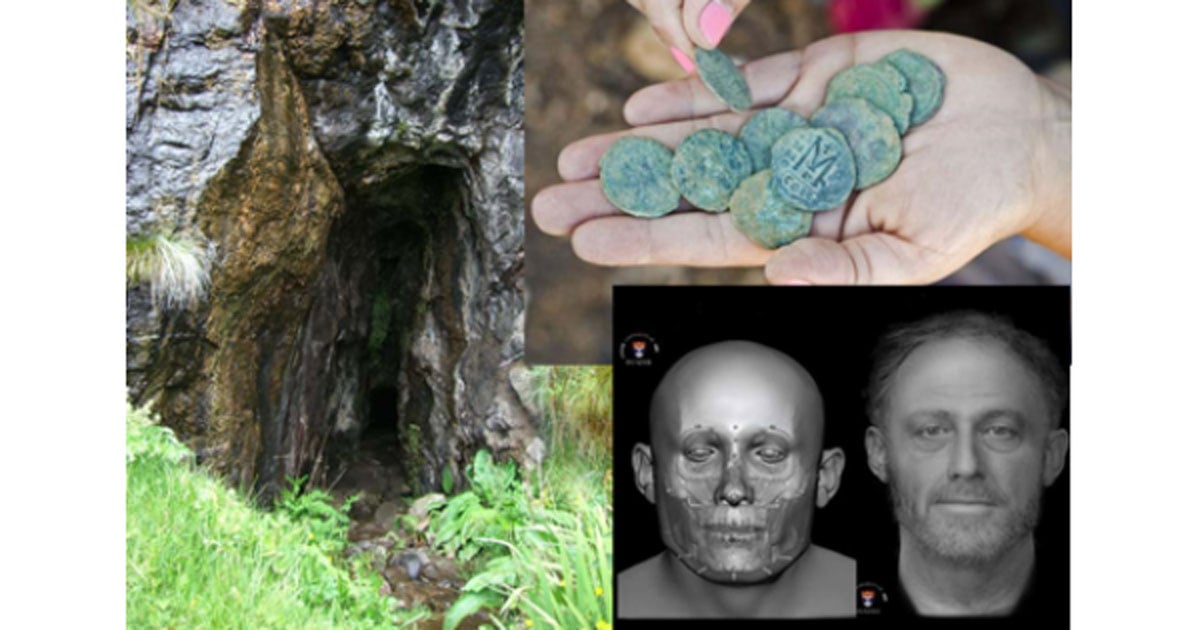Missed This Week's Top News Stories? Read Our Quick Round-Up
Amid the rush of daily life, it’s easy to miss some interesting news stories. So to make it easy for you, we have compiled a round-up of the most important stories from the past week.
Ancient Bones Reveal Gruesome Fate of Scottish Clan Members
More than 400 years ago, the Macleod clan of Scotland massacred about 400 of the Macdonalds on the Isle of Eigg in Scotland, when the Macleods smoked them to death in a cave in which they took refuge. Now a group of tourists have found more than 50 bones of the Macdonalds clan in that cave.
The attack on the Macdonalds wiped out most of the island’s residents after a clan feud erupted over some Macleod men possibly molesting some Macdonalds girls. As many as 400 Macdonalds islanders were slain in this outbreak of clan warfare.

The scene of the crime: The entrance to the cave on Eigg where the Macdonalds clan bones were found. ( Wikimedia Commons /Christian Jones photo)
1,400-Year-Old Coins are the Forgotten Remnants of a Terrifying Siege on Jerusalem
Israeli archaeologists announced the discovery of a hoard of rare Byzantine bronze coins from a site dating back to 614 AD. The newly found coins are clear evidence of the Persian invasion of Jerusalem at the end of the Byzantine period. As the Persian army (supported by many Jewish rebels) marched on Jerusalem in 614 AD, Christians living in the town rushed to hide their possessions, including a hoard of the valuable coins, hoping that things would soon go back to normal.

Nine bronze coins dating to the Byzantine period were hidden in the remains of a settlement near a highway to Jerusalem. ( Yoli Shwartz, courtesy of the Israel Antiquities Authority )
Face of ‘Ordinary Poor’ Man from Medieval Cambridge Graveyard Revealed
New facial reconstruction of a man buried in a medieval hospital graveyard discovered underneath a Cambridge college sheds light on how ordinary poor people lived in medieval England. The 13th-century man was among some 400 burials for which complete skeletal remains were uncovered when one of the largest medieval hospital graveyards in Britain was discovered underneath the Old Divinity School of St John’s College.
The man was probably an inmate of the Hospital of St John, a charitable institution which provided food and a place to live for a dozen or so indigent townspeople. Testing revealed he was over 40 when he died, and had a skeleton with a lot of wear and tear from a hard working life. His tooth enamel had stopped growing on two occasions during his youth, suggesting he had suffered bouts of sickness or famine early on. Archaeologists also found evidence of a blunt-force trauma on the back of his skull that had healed over prior to his death.

The facial reconstruction of Context 958 Source: Chris Rynn, University of Dundee
Other top stories from this week:
The 130-Million-Year-Old Human Fossil Heist
The Encoded Crusader Sword: Can You Solve the Cryptic Code?
20,000 Women and 100,000 Castrated Men to Serve the Emperor: The Imperial Harem of China
Two Roman Ships that Were Lost in WWII: What Destroyed the Floating Palaces of Emperor Caligula?
By Ancient Origins

















